The first splash came out of nowhere. One moment, I was strolling through the streets of old Bangkok, marvelling at the golden temples and bustling markets, and the next, I was drenched from head to toe. A mischievous child grinned at me, still clutching a bright blue water gun as if daring me to retaliate. And just like that, I was swept into the exhilarating chaos of Thailand’s Songkran Festival.
Songkran, Thailand’s traditional New Year celebration, is a festival like no other. Held annually from 13 to 15 April, it marks the end of the dry season with a nationwide water fight that symbolises purification, renewal, and a fresh start. What began as a gentle ritual of sprinkling water over elders for blessings has evolved into a full-scale battle of epic proportions.
As I weaved through the chaos, the streets were a blur of colour, laughter, and water splashes. Soaked to the bone and grinning like a child, I decided to take a break from the playful warfare and dive into another integral part of Thai culture—its food. As a Thai close to retirement age, I had participated in Songkran festivities many times before, but I was looking to do something different this time.
Songkran is when families around the country reunite and bond over food, and lots of it, ranging from convenient street eats to elaborate sets of dishes inspired by the royal households of old. I stumbled into a bustling street market, drawn by the intoxicating aroma of grilled meats, sizzling woks, and the unmistakable scent of lemongrass. Vendors called out their specialties, their stalls overflowing with colourful dishes. My stomach rumbled in anticipation.
I started with Som Tam, the famous green papaya salad. A vendor in a floral shirt and straw hat pounded shredded papaya, cherry tomatoes, chilies, and peanuts together in a wooden mortar. When he asked how spicy I wanted it, I confidently said, “Medium.” Big mistake. My first bite was a rollercoaster of flavours—sweet, sour, salty, and then… the heat hit me like a Songkran water cannon. My lips tingled, my eyes watered, and I couldn’t stop eating. The balance of flavors was addictive.

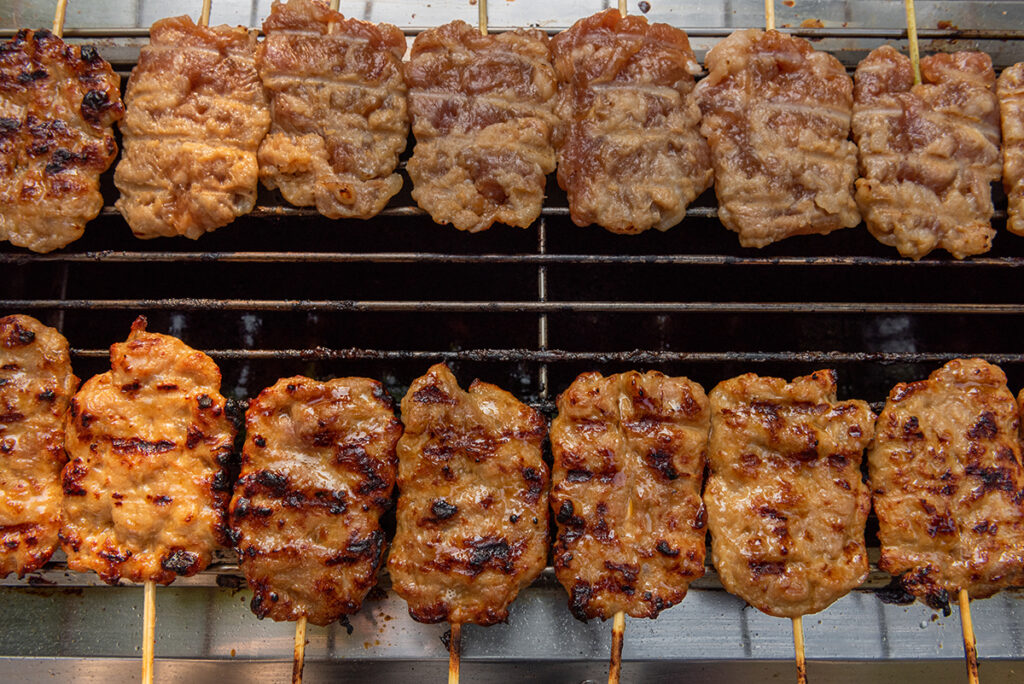
Next came Mu Ping, skewers of marinated pork grilled over charcoal, served with a sticky rice ball wrapped in banana leaf. The meat was tender, caramelized, and smoky, with just the right sweetness. I dipped it into a small plastic bag of Nam Chim Chaeo, a tangy, spicy dipping sauce, and savoured every bite.
Then I spotted it—the dish I had been both eager and terrified to try: Tomyum Kung. The steaming bowl of shrimp soup arrived, its surface shimmering with chili oil and fragrant herbs. One sip, and I was hooked. The broth was a perfect harmony of lemongrass, lime leaves, galangal, and chili. The shrimp were plump and fresh, absorbing the bold flavours. It was comfort food with a kick, the dish that made me sweat but left me craving more.
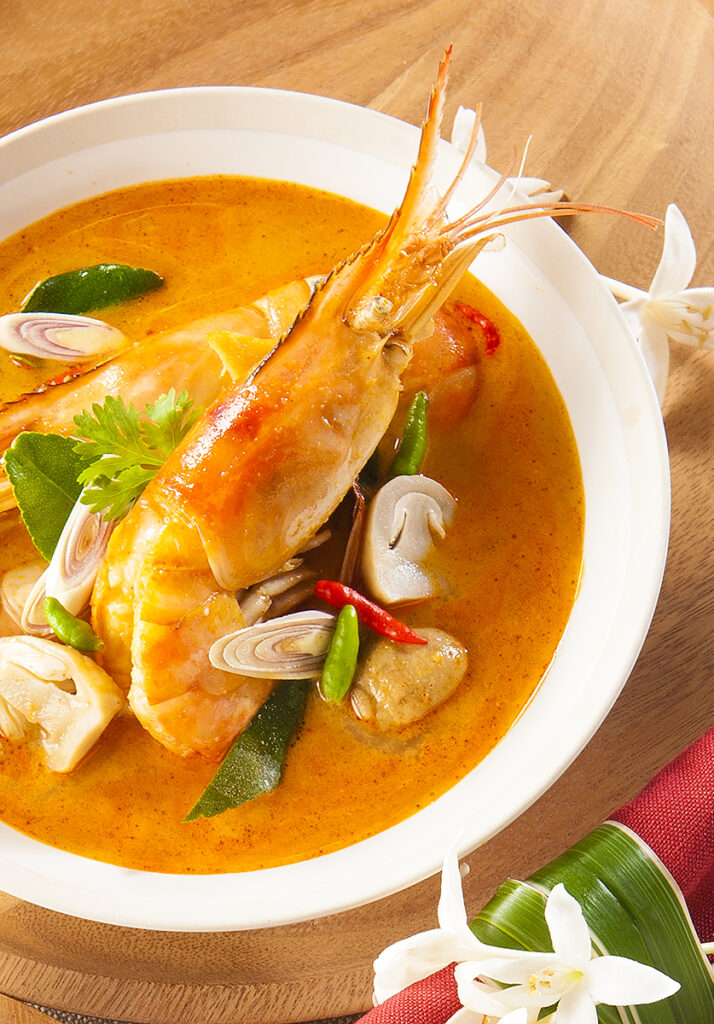
As I sat on a plastic stool, surrounded by locals and fellow tourists, my senses still buzzing from the explosion of flavours, I realized that Thai food wasn’t just about eating—it was an experience, an adventure. And it tasted even better during Songkran, with water fights raging all around and the air thick with celebration.
I wiped my brow, took one last sip of my ice-cold Thai tea, and smiled. Songkran had drenched me in more ways than one, and I wouldn’t have had it any other way.
Khao Chae: Thailand’s Cool Culinary Gem for the Summer
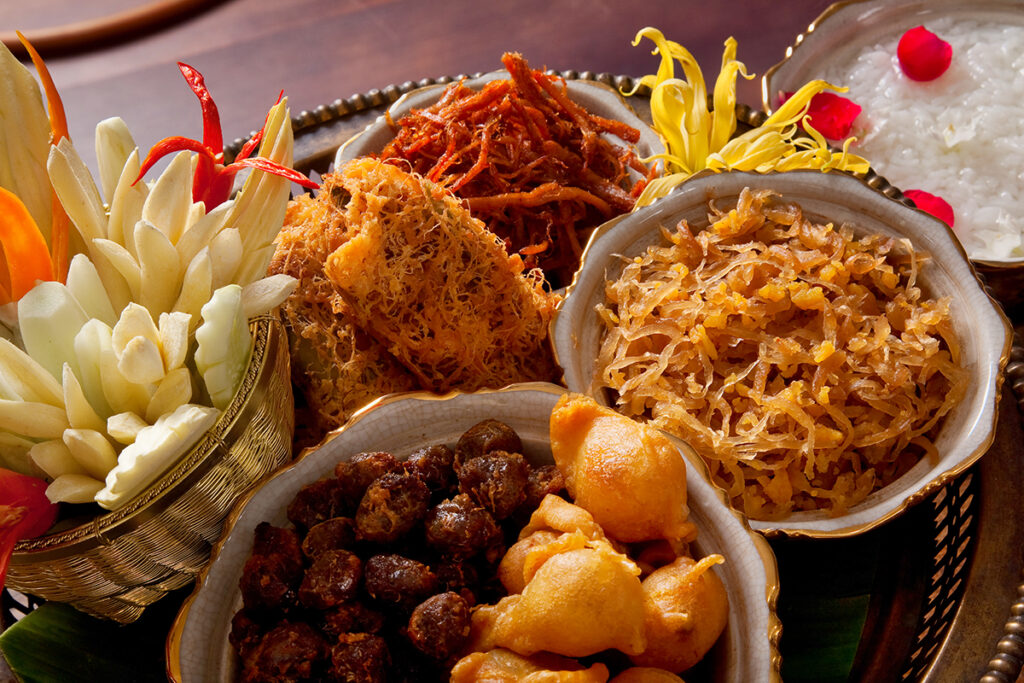
There is a guilty foodie pleasure I await with glee every Songkran. As summer’s temperature blankets Thailand, this age-old dish emerges to offer a refreshing escape—Khao Chae (ข้าวแช่). This elegant meal of chilled jasmine rice soaked in ice-cold, flower-scented water is more than just a culinary delight; it’s a rejuvenating experience that symbolizes tradition, refinement, and relief from the sun. What makes Khao Chae unique is its cooling effect and the dedication and care that goes into crafting its delicate flavours. Traditionally, the rice is rinsed multiple times to remove excess starch, ensuring a smooth and polished texture. It is then immersed in chilled water infused with fragrant jasmine or pandan to create a subtly aromatic experience.
A Taste of Thai Royalty
Khao Chae traces its roots to the royal kitchens of Thailand’s Rattanakosin era (1782–present), where it was meticulously prepared for the royal court during the hot season. However, its origins go even further back, and it is believed to be inspired by Mon cuisine, a cultural influence from early Mon communities in Thailand. Over time, Khao Chae transitioned from an exclusive palace dish to a beloved summer treat enjoyed by locals, particularly during Songkran.
A Symphony of Flavours
While the rice itself is light and refreshing, the magic of Khao Chae lies in its assortment of savoury side dishes, each meticulously prepared to complement the coolness of the rice. These include:
• Luk Kapi (ลูกกะปิ): Deep-fried shrimp paste balls offering a salty-sweet punch.
• Hom Daeng Yat Sai (หอมแดงยัดไส้): Stuffed shallots with minced pork or shrimp, wrapped in a crispy shell.
• Mu Foi (หมูฝอย): Sweet and shredded pork, balancing the savoury elements.
• Chaipo Phat (ไชโป๊วผัด): Stir-fried sweet radish, adding a chewy texture.
• Pla Duk Fu (ปลาดุกฟู): Crispy shredded catfish offering a delightful crunch.
Each bite of Khao Chae is a symphony of contrasts-textures and tastes that play off each other, creating a sophisticated yet refreshing dining experience.
A Seasonal Delight
Because of its elaborate preparation, Khao Chae is primarily enjoyed during summer, especially in April, when Thailand’s temperatures rise. Many high-end Thai restaurants and traditional eateries offer it as a limited-time dish, and families take pride in making their own versions at home.
For those seeking an authentic experience, Bangkok’s Tha Tian Market, Or Tor Kor Market, and prestigious hotels often serve Khao Chae during the Songkran season, staying true to the historical preparation methods.
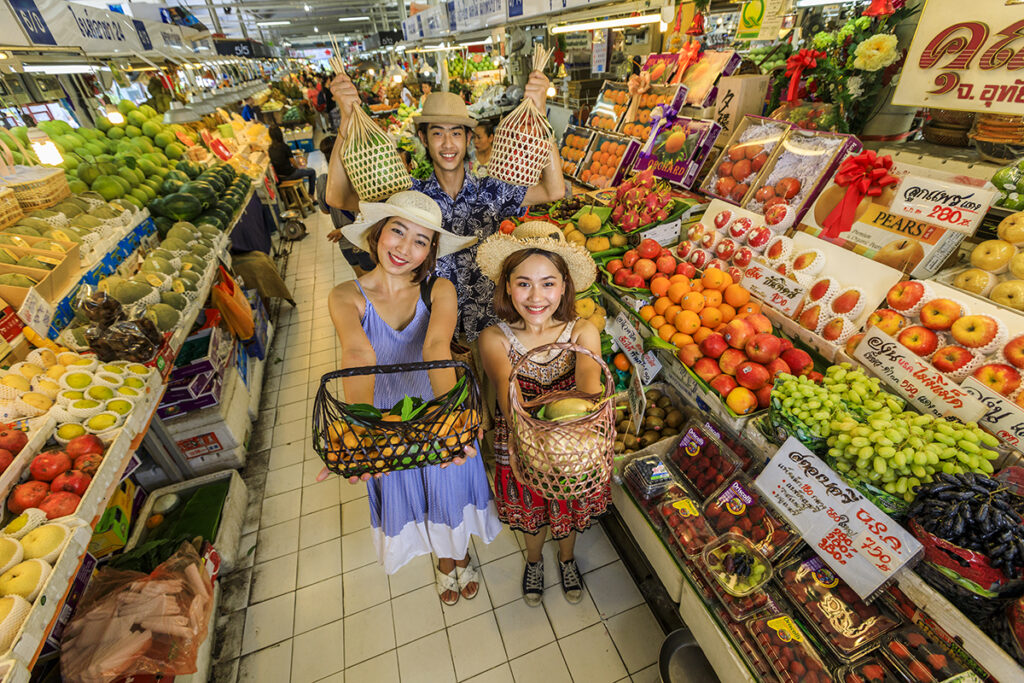
Cooling Down with Culture
More than just a dish, Khao Chae represents Thai hospitality, artistry, and an appreciation for balance—between heat and cold, simplicity and complexity. Eating Khao Chae is an immersive experience that transports you to a time when food was prepared with deep thought and cultural significance.
So why not take a cue from Thai tradition? A bowl of fragrant Khao Chae, a plate of delicious condiments, and a moment of cool relief—it’s the perfect way to savour Thailand’s culinary heritage.
The best places to get Khao Chae in Bangkok any time of year
Saneh Jaan – The Michelin-star restaurant is highly regarded for its jasmine rice Khao Chae with scented ice cubes.
Lai Ros—This local favourite features traditional Khao Chae with all the trimmings. It has been selling Khao Chae sets for well over 50 years.
Khao Chae Mae Siri—The Bang Lamphu institution has a unique Khao Chae recipe from Mon ancestors.
Jim Thompson, A Thai Restaurant – Khao Chae here has a contemporary twist and is served in elegant surroundings.
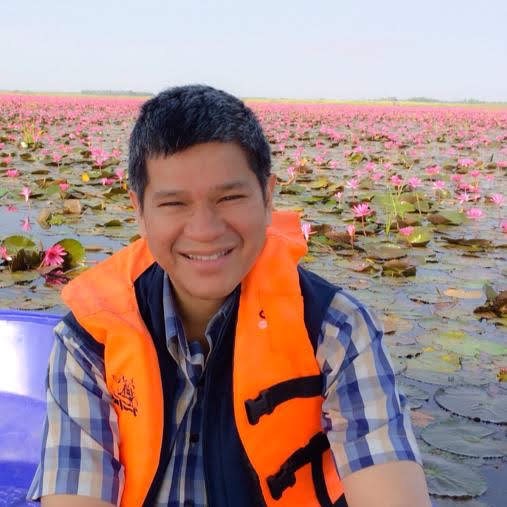
About the Author
“Frequent foodie and occasional craftsman of travel stories, Chattan Kunjara Na Ayudhya (Chat) draws on his nearly 4 decades of promoting Thailand’s tourism industry to highlight everything from world-class attractions to hidden gems. When not writing stuff, he makes it a mission to catch rom-coms and DC superheroes whenever they show up in theaters.”


